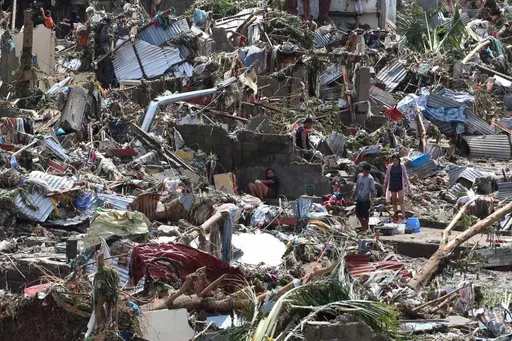Passengers flying into Delhi will likely catch a glimpse from the airplane window of the white marble dome of Humayun's Tomb rising from the city's skyline. Its grandness is palpable in that brief glance, inviting viewers to plan a visit.
For the unversed, Humayun's Tomb is the first Mughal mausoleum complex featuring a garden-tomb in the subcontinent. Named after the second Mughal emperor, father of Emperor Akbar, who is buried there, it was named a UNESCO World Heritage site in 1993.
The monument, built of red sandstone, was completed in 1571, and is home to a grand dynastic necropolis of 150 graves. The site is culturally significant and architecturally exemplifies what would become known as Mughal style, becoming a direct influence on the architecture of the Taj Mahal, which was constructed some 80 years later.
Earlier this month proposed plans to commercialise this historic site as part of a new government scheme to make heritage sites more appealing to tourists, were put on hold after a report by the independent news website The Wire, disclosed details.
The proposed measures led to an outcry on social media channels, as they appeared to prioritise boosting tourism revenue at the expense of preserving the nation's rich historical legacy. Under the Ministry of Culture and Tourism initiative, Adopt a Heritage 2.0, which is executed by the Archaeological Survey of India (ASI) and corporate partner Dalmiya Bharat - a fine dining restaurant and a café respectively at the southern gateway and atop the western entry of the site had been proposed in September. Plans also suggested an elevator running through the structure to access this cafe. Alongside there would be curated events and a light and sound show, meaning the 16th-century Mughal necropolis would be at risk of losing its sombreness and austerity in the coming years.
In total some 19 agreements have been signed for the caretaking of 66 of the 3,696 diverse monuments under ASI’s custody across India, including the Sun Temple of Konark, Odisha, Humayun's Tomb, Qutub Minar, Safdarjung's Tomb, Purana Qila in Delhi and the Elephanta Caves in Maharashtra.
ASI and the ministry’s sudden holding back of the proposed modifications while re-examining the vision statement has come across as a pleasant surprise for some historians and archeologists, yet there remains deep scepticism.

Emperor Humayun's final resting place has been a site for reflection for centuries. (Michael Foley/Creative Commons)
Dr. Ruchika Sharma Delhi-based academic and historian told TRT World, ”It means the monument won’t face the risk of damage… but with ASI, they might throw a curveball and still go ahead with the old plans. What they are now doing is a face saving measure,” to pacify those most concerned.
Private donations
After the scheme specifics for Humayun’s Tomb were announced, historians, archaeologists, and heritage lovers became concerned and perturbed about how the changes would be implemented. Weeks later ASI pointed out it is "examining"’ the proposals and the government has since kept the plans on hold.
“Logically they should have reviewed the proposal first, I hope in future maybe they realise that before signing the vision document. It shows the lackadaisical manner in which ASI did this, total lack of planning on their part,” added Dr. Sharma who also runs a YouTube channel that busts popular myths about Indian history. A clause in the Ancient Monument and Archaeological Sites and Remains Act (AMASR) of 1958, which governs almost all the heritage monuments of India, allows for India's conservation agency ASI to accept private funds to take care of monuments. "What's fascinating is that voluntary donation by private entities has now turned to a monetisation approach," Sharma said. "The Red Fort also underwent something similar in 2018 and was adopted by the same group, namely Dalmia Bharat that has adopted Humayun's Tomb."
When asked of her response on the government's reconsideration, Sharma replied, "It could be because many stakeholders have expressed their concern over the sanctity of the monument that they are reconsidering, it's a good thing for the monument."
The Tomb complex houses several other important monuments, including Isa Khan, Bu Halima, Nila Gumbad, and Barber's Tomb, where members of the Mughal dynasty are interred. It also holds the remains of Arab Serai (where Persian and Indian masons and craftsmen who built the tomb used to stay) in its premise, stretched over 27.04 hectares of land.
Even when the tomb was being built, it played a historically vital role. Akbar, one of the greatest emperors of the time, had visited the site of his father's tomb, checking on the work's progress. Later, emperor Shah Jahan was inspired by its architectural elements, especially the char-bagh (a garden setting guided by the description of heaven in the Quran). This culminated into the grand Taj Mahal, with its very own elaborate char-bagh.
The char-bagh and stone edifice are what helped Humayun's Tomb gain the status of a UNESCO World Heritage site.
Respecting history
During Partition, the Tomb served as a refugee camp in 1947 for Muslims fleeing violence, adding to its already sombre history.
Rana Safvi, a historian of mediaeval India and a well-known author of several books on Delhi's history including "The Forgotten Cities of Delhi" highlighted the importance of respecting that history.

The char-bagh, the garden surrounding Humayun's Tomb, is believed to be a representation of the gardens of paradise. (Creative Commons)
Speaking to TRT World, she said, "I am not against monetisation per say but we need to keep in mind the nature of the monument, more so when it has a sanctity and religious element associated. Humayun's tomb is one of the most popular monuments in Delhi, but it is after all a mausoleum which houses not just the grave of Humayun but many other Mughal men and women."
Desecration?
Sharma echoed Safvi's concern, highlighting how the purpose of the monument as a tomb is reflected in its architecture. The octagonal structure with four interred recesses and a dome, typical of Timurid style, is architecturally complex but fascinating to look at.
According to Sharma, the tomb was built by Akbar under chief architect Merak Mirza Ghiyas, an Iranian man, in 1562. The work took nearly nine years and envisioned Humayun's body in eight gardens of Paradise, or Baghe-e-Bahisht.
"That's exactly why and how the stone tomb was built at the centre of these gardens with channels of water flowing known as char-bagh design," she said.
Sharma also elaborated the importance of char-bagh through an incredible historical reference, adding "In Akbar Nama, Akbar's biography written by Abul Fasal, Humayun is not mentioned by his name mostly, but referred to as 'Jannat Ashiyani' – the one who is lying in heaven. Akbar had actually created an idea or microcosm of Paradise for Humayun to be laid in.

The 14th century Sufi Saint Nizamuddin Auliya's shrine, considered a holy site by some, is located beside Humayun's tomb. (P. L. Tandon/Creative Commons)
"Disturbing or uprooting the char-bagh area would damage this fabric of the monument, for the monument is not only the stone tomb but the char-bagh too. If the char-bagh area gets removed or desecrated, then the idea and design of the place is taken away and it worries me to no end," she said.
Both historians' concerns revolve around disturbing the spirit and the architecture of the place, and how that would be damaged if the proposed changes were ever implemented.
Legal questions
Additionally, the AMASR Bill of 1958 forbade any tampering with monuments. According to Sharma, "The bill says there should be a 100-metre perimeter around the core monument within which no construction activity can happen."
She pointed out that the term "monument" doesn't only refer to the stone tomb, but also the char-bagh, which has mango, neem and citrus trees standing resplendent across it. These were part of the original architectural design and thus protected from new building activity, she said.
Having an elevator run through it or having a café too close by would be "absolutely disastrous. It will damage the monument, exactly the reason why the act forbids any construction activity. It's illegal and preposterous to have new construction, other than taking away the spirit of the place.”

Arched windows and doorways circle around Humayun's tomb, resting at the centre. (Saad Akhtar/Creative Commons)
Moreover, Humayun's tomb was built very close to 14th century Sufi Saint Nizamuddin Auliya's shrine, one of India's most venerated.
"It was a common practice then. They believed that the Saint could intercede with Almighty, pleading forgiveness for the deceased and requesting the interred person to be accepted in Paradise," said Sharma, highlighting the austerity and spirituality interlinked with the location.
Monetisation push
When reminded of the array of souvenir shops around the Red Fort, which is equally iconic, Sharma retorted, "I am open to experiment, and there are many shops in Red Fort even now, but the architectural feature was always there. Or take the instance of Fatehpuri Masjid at Chandni Chowk in Old Delhi - that has always had shop spaces, in fact 19th-century Delhi's biggest grain market was located there. But can you do this with a tomb, I think not."
Perhaps ASI backtracked considering this inherent nature of the monument.
Monetising heritage sites was never a part of the original AMASR Bill, but the 2024 Adopt a Heritage 2.0 plan involves such a push. The earlier bill did seek voluntary fund support, but no corporations were involved, and the aim had been to keep India's 3,500+ monuments and sites conserved and cared for.
Ironically the caretaking entity Sabhyata Foundation (an off-shoot of the Dalmia group) has mentioned in their vision that they want the visitors to "experience the Sufi Philosophy and Religious Harmony."
By that rationale, disturbing the sanctity of a tomb complex, which is so close in proximity to India's most venerated Sufi shrine Nizamuddin Auliya, is an absurd proposition, leaving apart the architectural disaster that it may induce.
For Safvi, this would lead to the "dilution of India's heritage and history”.
To imagine people drinking coffee in a necropolis, an UNESCO World heritage, seems utterly dystopian albeit not surprising given the continuous attempt to alter India's history, one monument at a time.




























